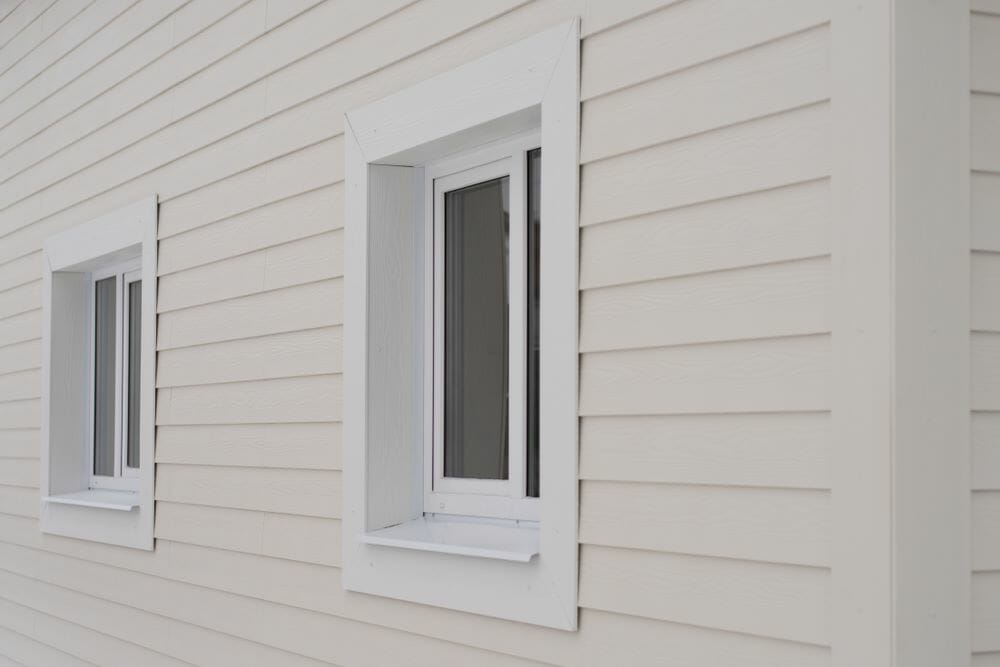What is Hardboard Siding?
Hardboard siding, also known as pressboard siding, is a synthetically constructed siding product. It is made by binding wood fibers, resins, and glue using pressure and heat. This siding has been used from the 1980s to the 1990s because of its affordability, but when a lawsuit was brought forward against it in 1994, most manufacturers stopped using it.
The case was also concluded that homeowners whose houses were constructed using hardboard siding would be compensated for costs incurred in fixing damages.

What is the issue with hardboard?
Hardboard is quite good, and it gives a remarkable appearance to the house. However, one major issue with it is that it absorbs water naturally and the hardboard siding starts swelling buckling, warping, blistering, rotting, softening and ultimately deteriorating.
This damage hugely lowers the durability of the hardboard siding. But this cannot be entirely placed on the manufacturing because good board maintenance will give you better durability. If you like to hire someone for Ideal Siding in Toronto, just get a quote!
Identifying a pressboard/hardboard
Since maintenance is very crucial to hardboard, you must know whether or not your house is built with pressboard to take the necessary precautions and control measures. Identifying the type of siding can sometimes be difficult, especially from an intact part. But places like the attic usually have some unfinished parts, and you can identify the material from that.
All hardboards/pressboards usually have an AHA code, but often it is written behind the siding. A tar paper will probably be hiding it; therefore, you need to pull it off. You will find the manufacturer’s company name, which you can search online to determine if they deal with hardboard. Or, you will see an AHA code, which basically stands for the American Hardboard Association.
Ways to maintain hardboard
You do not need to worry if you find your house has a pressboard because it is just like other siding products. Like other siding products, hardboard also needs regular maintenance and here are some of the ways to do so.
1. Do not have water drainage near the siding
As mentioned above, water is not good for pressboard; therefore, you should keep it as far away as possible. The downspouts and drain pipes need to be constructed or reconstructed at a distance of six or more feet away.
2. Keep it away from anything watery
The ability of the hardboard siding to absorb water makes it capable of absorbing water off the ground, which might lead to its damage. Trees, vegetation, and vines should also be kept away. About the issue of the ground, the hardboard should be installed six or more feet above the ground.
3. Use sprinklers carefully
Water or any other liquid sprinklers should be used cautiously if the house is made of hardboard. Never should you point the sprinklers towards the hardboard.
4. Keep gutters and drainages in good condition
Make sure your gutters are not leaking, damaged, clogged, or sagging as this may allow out water that may damage the fiberboard. Also, for the same reason, always remove blockages and obstructions from your water drainages.
5. Avoid the use of power washers on the hardboard
Power washers sometimes go beyond the pressure of 200 MPH. The hardboard can easily be split or cracked but that mush pressure.
6. Have the ground sloping away from the pressboard siding
The sliding ground can lead to the flow of water, and if it is sloping towards the house, then the water will flow to the hardboard. Therefore, if the ground is not sloping away, then you should find someone to correct that.
7. Check regularly for any signs of damage
Just a slight split on the hardboard siding can allow in a substantial amount of water that can ultimately cause damage or rot to the siding. Therefore always keep your eye open for any slight change.
8. Make thorough and quick
Having seen how badly water and hardboard relate, you should create the habit of doing any repair however little it may be. This should apply mainly to the splits and cracks. If you cannot do this by yourself, you can always call a service provider company in Calgary or another city to come and help.